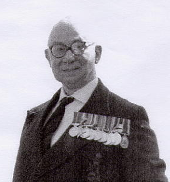



The Parish Church of St George the Martyr, Waterlooville

Autumn 2015
Diaries of a First World War Bugler
8th FEBRUARY 1916.
At 10 o’clock in the morning we left Talmas and after marching about 8 miles, we arrived at Cardennette. This place is not so dusty. It possesses a somewhat new and picturesque church. Physical drill was the order every morning. This continued until at last we heard we were moving. This was on the afternoon of 11th February.
12th FEBRUARY 1916.
As announced we did move at 10 o’clock. It was not at all a bad march. It was certainly made easier because we had to pass through a lot of villages and towns among which was Amiens. This is a lovely place. Trains (electric) running along, and houses oh so fine! In fact I thought I was in London again. I can only say to those who have the means that they should visit Amiens and they will never regret it. Our destination turned out to be Picquigny which we reached at 6 p.m. This was a fine town, larger than my other favourite place, Baillieui. We slept in what was a hairdresser’s on the first floor front, if you please! My word we did let it rip! After spending a night here we fell in again at 9.15 a.m. for our next move. I might say we were marching from 10 a.m. till 6 p.m. yesterday. Today we have got 20 miles to do. We started off; the march was a very trying one. Just before completing the half journey we passed through Airaines and who should I see there but Harold Chapman in the 1/3 Royal Fusiliers -
Well on we must go for the other half of our journey which we completed by 8 p.m., just think of it, 11 hours marching, 20 miles and each man carrying about 701bs on his back. Our destination this time is a place called Vauxmarquenville. This is evidently the meeting place for this London Territorial Division for, in villages close to us, we have the London Scottish, London Rifle Brigade, the Rangers, Queen's Westminster, 2nd C. Fusiliers and ourselves, the Queen Victoria’s Rifles. Our stay here will always be remembered by me for we had a severe snow storm and whilst on duty I got lost in open country, the roads being covered by snow. After wandering about for 2½ hours I arrived back at 10 o'clock at night.
We left the aforementioned place on
SUNDAY 27th FEBRUARY 1916 and marched 15 miles over frozen roads to Ailly-
7th MARCH 1916.
We are still at the aforementioned place training. We played the Queen’s Westminsters at rugby, score nil-
12th MARCH 1916.
We left Ailley-
16th MARCH 1916.
The place itself is not so bad. It boasts of five estaminets and a small general shop. It extends something like 1½ miles but is very scattered. Since I have been here I have had several walks. One walk took me past an old stone Crucifix which, on examining closely, I found was erected in 1700, some 200 years ago. I could not help but wonder how many worshippers had been there during that time. Our time up to the present has been spent training in various ways.
22nd MARCH 1916.
We had a 3½ mile road race. There were 30 competitors. After running for ½ a mile I saw I was fourth. I kept this place until ¼ mile from the finish and there I hurt my foot slightly, however, I managed to keep on and eventually finished 7th doing the whole journey in 20¼ minutes. The day following this we had a severe snowstorm which lasted two days. The countryside looked lovely but it makes us so miserable because we get stone cold and have not a fire with which to get warm.
This brings me to the 26th MARCH 1916. I am pleased to say the weather is changing to the good. We are still training.
8th APRIL 1916.Saturday.
We were marching along and who should I see but a fellow named Daley who used to work at Cooper Stewarts. The next day, Sunday, we went to a demonstration of this “Liquid Fire”. It is a wonderful sight and must have put the fear of God into our men the first time the enemy used it on them. The appliance itself resembles an old-
To be continued

To mark the 100th anniversary of the outbreak of World War I, we are continuing the serialisation of the diaries of Bugler John McCormack -
30th JANUARY 1916.
We left this place at 9.0 o'clock and marched to Lahoussye, 10 miles. We stayed here for a night and started off again for another 12 miles’ march. This brought us to a place called Talmas where we have been doing attack practice etc.
4th FEBRUARY 1916.
After four more days of this work we received orders to prepare to move.